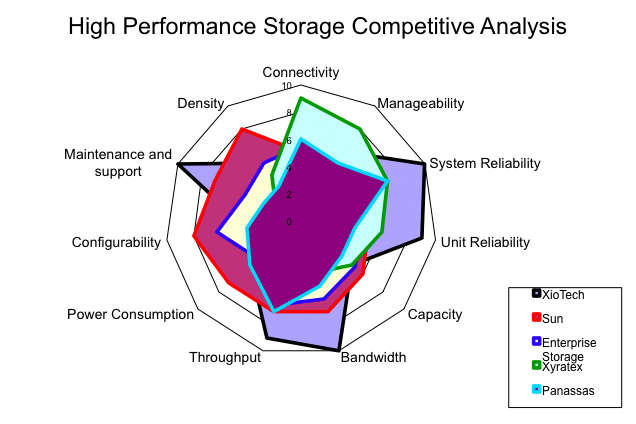Taking business away from your competitors can be a daunting task. They are already familiar with and in many cases, happy with the service they are receiving. You must look closely at the business you want to acquire from your competitors, in order to define a specific strategy. Do you want to dominate a certain product category or a specific geography? Or do you want to focus on a particular customer type, such as large volume or a specific SIC?
Identify the Desired Business You Want to Take Away
This may sound like an obvious first step, but we have found that these questions are often not completely thought through. Your competitors would probably be happy to have you take away their low profit business or customers who cause them stress. You must be very precise on the business you want to take away to ensure that your action plan accomplishes that goal. The targeted business should meet your company objectives, match your capabilities and not compromise your current business.
Do the Research
Understanding your competitors thoroughly is an advantage for all areas of your business. A good understanding of your key competitors’ capabilities, strengths and weaknesses will enable your sales teams to sell better and your marketing group to target messaging and create campaigns that are the most effective. Effective research should outline a head to head comparison of competitors’ capabilities, key messaging, strengths and weaknesses in a matrix format to enable direct comparison to your key areas. Interviews with customers will also provide both quantitative as well as qualitative information about your competitors as well as about your company. Honest feedback from customers can sometimes be hard to hear, but is necessary in enabling you to understand how you stack up to your competition. It’s also imperative to research your competitors’ online presence. What messages are they using to encourage online visits? How do potential customers view their website capabilities? At RRM, we approach competitive research by selecting a group of attributes/capabilities/messaging across competitors for comparison and analysis. We then quantify each competitor in each area, based on messaging and customer feedback. The outcome is a quantitative measurement that will outline similarities and differences. We are looking for what you do better than your competitors so that you can align your messaging and marketing programs with that advantage.

Figure 1 — High performance storage competitive analysis
Determining Potential
Now that you’ve identified the customer groups that you want to target, you’ll need to determine their potential spend. Will it be worth the time and expense to pursue the entire segment or just parts of it? At RRM, we have developed an excellent way using customer segmentation to help you make these decisions. Using firmagraphic information, we have created an analysis that will enable you to focus on those customers with the best potential. (See Acquire New Customers for more ideas.)
Campaign Creation
Now it’s time to do the heaving lifting….creating a comprehensive integrated campaign designed to get the prospect to make their first purchase with you. Marketing and Sales will work together to create and implement a campaign of multiple “touches” which could include and email, an outside sales visit and an inside sales follow-up. There are multiple configurations of this campaign based on the capabilities you have. You may even choose to test a few different configurations. Here is an example of a typical campaign brief that RRM uses to help you create these integrated campaigns.
| Target Customers | Companies who make a first time purchase via the website or inside sales |
| Problem/Opportunity | There is no formalized process to persuade first-time buyers to make a second purchase. With new accounts entering via the new e-commerce site, it will bei mportant to integrate these new accounts into a structured program. This program will dramatically increase the number of customers who continue to buy. This will have a dramatic multiplicative effect on sales over time. |
| Solution Synopsis | Establish a methodology to welcoem first-time buyers and provide special offers and incentives to make additional purchases. |
| Goal | Increase the number of first-time buyers who make a second purchase by 25% within 3 months. |
| Work to Do | Define offers to convert more first-time buyers to long-term customers. Develop call process and script. Complete a program brief for this program. |
Measuring the Results
Now that the campaigns are in place, you will need to find a way to measure the results of your efforts. How many of your target prospects were you able to convert to a first time buyer? Is the cost worth the effort? RRM can help you set up key measurements upfront based on target goals.
Put a Defensive Strategy in Place
Don’t forget that your competitors are probably targeting your customers also! That’s why it will be important for you to have a defensive strategy in place to retain your customers. We have found that the most effective way to retain customers is to create specific campaigns around where they are in the customer lifecycle. New customers will need to be nurtured so that they will continue to purchase from you, whereas customers who have been with you for several years and are buying consistently may only need a few touches and a watchful eye on their ordering patterns. These campaigns can be tested and changed based on the results obtained. Read the article below for more specifics.
Improve Customer Lifecycle Management with Simple Analytics »
Jonathan Bein, Ph.D. is Managing Partner at Distribution Strategy Group. He’s
developed customer-facing analytics approaches for customer segmentation,
customer lifecycle management, positioning and messaging, pricing and channel strategy for distributors that want to align their sales and marketing resources with how their customers want to shop and buy. If you’re ready to drive real ROI, reach out to Jonathan today at
jbein@distributionstrategy.com.
